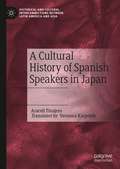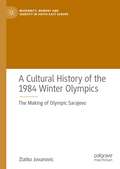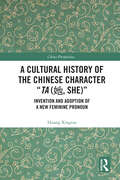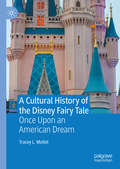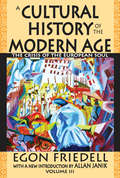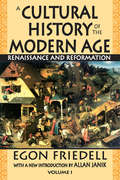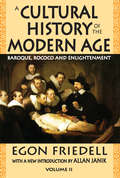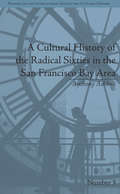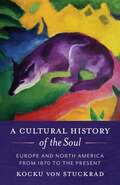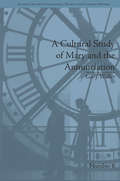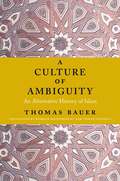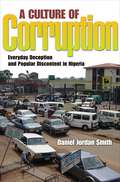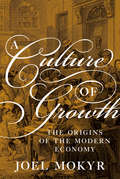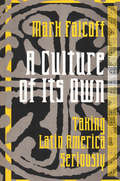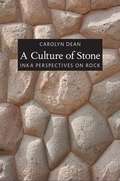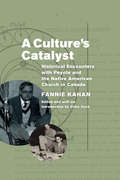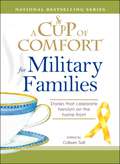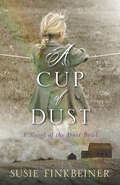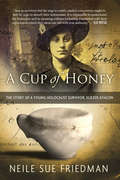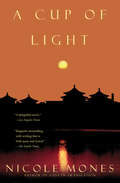- Table View
- List View
A Cultural History of Spanish Speakers in Japan (Historical and Cultural Interconnections between Latin America and Asia)
by Araceli TinajeroBeginning in 1990, thousands of Spanish speakers emigrated to Japan. A Cultural History of Spanish Speakers in Japan focuses on the intellectuals, literature, translations, festivals, cultural associations, music (bolero, tropical music, and pop, including reggaeton), dance (flamenco, tango and salsa), radio, newspapers, magazines, libraries, and blogs produced in Spanish, in Japan, by Latin Americans and Spaniards who have lived in that country over the last three decades. Based on in-depth research in archives throughout the country as well as field work including several interviews, Japanese-speaking Mexican scholar Araceli Tinajero uncovers a transnational, contemporary cultural history that is not only important for today but for future generations.
A Cultural History of Translation in Early Modern Japan
by Rebekah ClementsThe translation of texts has played a formative role in Japan's history of cultural exchange as well as the development of literature, and indigenous legal and religious systems. This is the first book of its kind, however, to offer a comprehensive survey of the role of translation in Japan during the Tokugawa period, 1600-1868. By examining a wide range of translations into Japanese from Chinese, Dutch and other European texts, as well as the translation of classical Japanese into the vernacular, Rebekah Clements reveals the circles of intellectual and political exchange that existed in early modern Japan, arguing that, contrary to popular belief, Japan's 'translation' culture did not begin in the Meiji period. Examining the 'crisis translation' of military texts in response to international threats to security in the nineteenth century, Clements also offers fresh insights into the overthrow of the Tokugawa shogunate in 1868.
A Cultural History of the 1984 Winter Olympics: The Making of Olympic Sarajevo (Modernity, Memory and Identity in South-East Europe)
by Zlatko JovanovicThis book examines the 1984 Sarajevo Winter Olympic Games. It tells the story of the extensive infrastructural transformation of the city and its changing global image in relation to hosting of the Games. Reviewing different cultural representations of Sarajevo in the period from the 1960s to the 1980s, the book explores how the promotion of the city as a future global tourist centre resulted in an increased awareness among its populace of the city’s cultural particularities. The analysis reveals how the process of modernisation relating to hosting of the Olympics provided an opportunity to re-imagine the city as a particularly environmentally progressive city. Placed within the field of studies of late socialism, the book offers important insights into Yugoslav society during the period, including those relating to the country’s unique geopolitical position and its nationalities policies.
A Cultural History of the British Empire: A Cultural History of the British Empire
by John MacKenzieA compelling history of British imperial culture, showing how it was adopted and subverted by colonial subjects around the world As the British Empire expanded across the globe, it exported more than troops and goods. In every colony, imperial delegates dispersed British cultural forms. Facilitated by the rapid growth of print, photography, film, and radio, imperialists imagined this new global culture would cement the unity of the empire. But this remarkably wide-ranging spread of ideas had unintended and surprising results. In this groundbreaking history, John M. MacKenzie examines the importance of culture in British imperialism. MacKenzie describes how colonized peoples were quick to observe British culture—and adapted elements to their own ends, subverting British expectations and eventually beating them at their own game. As indigenous communities integrated their own cultures with the British imports, the empire itself was increasingly undermined. From the extraordinary spread of cricket and horse racing to statues and ceremonies, MacKenzie presents an engaging imperial history—one with profound implications for global culture in the present day.
A Cultural History of the Chinese Character “Ta: Invention and Adoption of a New Feminine Pronoun (China Perspectives)
by Huang XingtaoThis book offers a thorough examination of the history of a Chinese female pronoun – the Chinese character "Ta (她, She)" and demonstrates how the invention and identification of this new word is inextricably intertwined with matters of sociocultural politics. The Chinese character Ta for the third-person feminine singular pronoun was introduced in the late 1910s when the voices of women’s liberation rang out in China. The invention and dissemination of this word not only reflected an ideological gendering of the Chinese script but also provoked heated academic and popular debate well into the 1930s. Thus, the history of Ta provides a prism through which to explore modern Chinese history. The author provides an ambitious and informed examination of how Ta was invented and promoted in relation to the gender equality movement, the politics of neologism, and other domestic elements and international catalysts. This book is the first major work to survey Ta’s creation. It draws on diverse sources, including interviews with eight historians who experienced the popularisation of Ta as youths in the 1930s and 40s. This book will be an essential read for students and scholars of East Asian Studies, Chinese Cultural History, and those who are interested in the history of China.
A Cultural History of the Disney Fairy Tale: Once Upon an American Dream
by Tracey L. MolletThis book charts the complex history of the relationship between the Disney fairy tale and the American Dream, demonstrating the ways in which the Disney fairy tale has been reconstructed and renegotiated alongside, and in response to important changes within American society. In all of its fairy tales of the twentieth and twenty-first centuries, the Walt Disney studios works to sell its audiences the national myth of the United States at any one historical moment. With analyses of films and television programmes such as The Little Mermaid (1989), Frozen (2013), Beauty and the Beast (2017) and Once Upon a Time (2011-2018), Mollet argues that by giving its fairy tale protagonists characteristics associated with ‘good’ Americans, and even by situating their fairy tales within America itself, Disney constructs a vision of America as a utopian space.
A Cultural History of the Modern Age: The Crisis of the European Soul
by Egon FriedellVolume three of A Cultural History of the Modern Age finishes a journey that begins with Descartes in the first volume and ends with Freud and the psychoanalytical movement in the third volume. Friedell describes the contents of these books as a series of performances, starting with the birth of the man of the Modern Age, followed by flowering of this epoch, and concludes with the death of the Modern Age.This huge landscape provides an intertwining of the material and the cultural, the civil and the military, from the high points of creative flowering in Europe to death and emptiness. The themes convey multiple messages: romanticism and liberalism opens the cultural scene, encased in a movement from The Congress of Vienna and its claims of peaceful co-existence to the Franco-German War. The final segment covers the period from Bismarck's generation to World War I. In each instance, the quotidian life of struggle, racial, religious, and social class is seen through the lens of the mighty figures of the period.The works of the period's great figures are shown in the new light of the human search for symbolism, the search for superman, the rise of individualism and decline of history as a source for knowledge. This third volume is painted in dark colors, a foreboding of the world that was to come, of political extremes, and intellectual exaggerations. The author looks forward to a postmodern Europe in which there is a faint glean of light from the other side. What actually appeared was the glare of Nazism and Communism, each claiming the future.
A Cultural History of the Modern Age: Volume 1, Renaissance and Reformation
by Egon FriedellHistorian, philosopher, critic, playwright, journalist, and actor, Egon Friedell was a key figure in the extraordinary flowering of Viennese culture between the two world wars. His masterpiece, A Cultural History of the Modern Age, demonstrates the intellectual universality that Friedell saw as guarantor of the continuity and regeneration of European civilization. Following a brilliant opening essay on cultural history and why it should be studied, the first volume begins with an analysis of the transformation of the Medieval mind as it evolved from the Black Death to the Thirty Years War. The emphasis is on the spiritual and cultural vortex of civilization, but Friedell never forgets the European roots in pestilence, death, and superstition that animate a contrary drive toward reason, refinement, intellectual curiosity, and scientific knowledge. While these values reached their apogee during the Renaissance, Friedell shows that each cultural victory is precarious, and Europe was always in danger of slipping back into barbarism. Friedell's historical vision embraces the whole of Western culture and its development. It is a consistent probing for the divine in the world's course and is, therefore, theology; it is research into the basic forces of the human soul and is, therefore, psychology; it is the most illuminating presentation of the forms of state and society and, therefore, is politics; the most varied collection of all art-creations and is, therefore, aesthetics. Thomas Mann regarded Friedell as one of the great stylists in the German language. Like the works of the great novelist, A Cultural History of the Modern Age offers a dramatic history of the last six centuries, showing the driving forces of each age. The new introduction provides a fascinating biographical sketch of Friedell and his cultural milieu and analyzes his place in intellectual history.
A Cultural History of the Modern Age: Volume 1, Renaissance and Reformation
by Egon FriedellHistorian, philosopher, critic, playwright, journalist, and actor, Egon Friedell was a key figure in the extraordinary flowering of Viennese culture between the two world wars. His masterpiece, A Cultural History of the Modern Age, demonstrates the intellectual universality that Friedell saw as guarantor of the continuity and regeneration of European civilization. Following a brilliant opening essay on cultural history and why it should be studied, the first volume begins with an analysis of the transformation of the Medieval mind as it evolved from the Black Death to the Thirty Years War. The emphasis is on the spiritual and cultural vortex of civilization, but Friedell never forgets the European roots in pestilence, death, and superstition that animate a contrary drive toward reason, refinement, intellectual curiosity, and scientific knowledge. While these values reached their apogee during the Renaissance, Friedell shows that each cultural victory is precarious, and Europe was always in danger of slipping back into barbarism. Friedell's historical vision embraces the whole of Western culture and its development. It is a consistent probing for the divine in the world's course and is, therefore, theology; it is research into the basic forces of the human soul and is, therefore, psychology; it is the most illuminating presentation of the forms of state and society and, therefore, is politics; the most varied collection of all art-creations and is, therefore, aesthetics. Thomas Mann regarded Friedell as one of the great stylists in the German language. Like the works of the great novelist, A Cultural History of the Modern Age offers a dramatic history of the last six centuries, showing the driving forces of each age. The new introduction provides a fascinating biographical sketch of Friedell and his cultural milieu and analyzes his place in intellectual history.
A Cultural History of the Modern Age: Volume 2, Baroque, Rococo and Enlightenment
by Egon FriedellThis is the second volume of Friedell's monumental A Cultural History of the Modern Age. A key figure in the flowering of Viennese culture between the two world wars, this three volume work is considered his masterpiece. The centuries covered in this second volume mark the victory of the scientifi c mind: in nature-research, language-research, politics, economics, war, even morality, poetry, and religion. All systems of thought produced in this century, either begin with the scientifi c outlook as their foundation or regard it as their highest and fi nal goal.Friedell claims three main streams pervade the eighteenth century: Enlightenment, Revolution, and Classicism. In ordinary use, by "Enlightenment" we mean an extreme rationalistic tendency of which preliminary stages were noted in the seventeenth century. Th e term "Classicism", is well understood.Under the term "Revolution" Friedell includes all movements directed against what has been dominant and traditional. Th e aims of such movements were remodeling the state and society, banning all esthetic canons, and dethronement of reason by sentiment, all in the name of the "Return to Nature." Th e Enlightenment tendency might be seen as laying the ground for an age of revolution. Th is second volume continues Friedell's dramatic history of the driving forces of the twentieth century.
A Cultural History of the Radical Sixties in the San Francisco Bay Area (Studies for the International Society for Cultural History #3)
by Anthony AshboltThe San Francisco Bay Area was a meeting point for radical politics and counterculture in the 1960s. Until now there has been little understanding of what made political culture here unique. This work explores the development of a regional culture of radicalism in the Bay Area, one that underpinned both political protest and the counterculture.
A Cultural History of the Soul: Europe and North America from 1870 to the Present
by Kocku von StuckradThe soul, which dominated many intellectual debates at the beginning of the twentieth century, has virtually disappeared from the sciences and the humanities. Yet it is everywhere in popular culture—from holistic therapies and new spiritual practices to literature and film to ecological and political ideologies. Ignored by scholars, it is hiding in plain sight in a plethora of religious, psychological, environmental, and scientific movements.This book uncovers the history of the concept of the soul in twentieth-century Europe and North America. Beginning in fin de siècle Germany, Kocku von Stuckrad examines a fascination spanning philosophy, the sciences, the arts, and the study of religion, as well as occultism and spiritualism, against the backdrop of the emergence of experimental psychology. He then explores how and why the United States witnessed a flowering of ideas about the soul in popular culture and spirituality in the latter half of the century.Von Stuckrad examines an astonishingly wide range of figures and movements—ranging from Ernest Renan, Martin Buber, and Carl Gustav Jung to the Esalen Institute, deep ecology, and revivals of shamanism, animism, and paganism to Rachel Carson, Ursula K. Le Guin, and the Harry Potter franchise. Revealing how the soul remains central to a culture that is only seemingly secular, this book casts new light on the place of spirituality, religion, and metaphysics in Europe and North America today.
A Cultural Study of Mary and the Annunciation: From Luke to the Enlightenment (Studies for the International Society for Cultural History #8)
by Gary WallerThis book traces the history of the Annunciation, exploring the deep and lasting impact of the event on the Western imagination. Waller explores the Annunciation from its appearance in Luke’s Gospel, to its rise to prominence in religious doctrine and popular culture, and its gradual decline in importance during the Enlightenment.
A Culture of Ambiguity: An Alternative History of Islam
by Thomas BauerIn the Western imagination, Islamic cultures are dominated by dogmatic religious norms that permit no nuance. Those fighting such stereotypes have countered with a portrait of Islam’s medieval “Golden Age,” marked by rationality, tolerance, and even proto-secularism. How can we understand Islamic history, culture, and thought beyond this dichotomy?In this magisterial cultural and intellectual history, Thomas Bauer reconsiders classical and modern Islam by tracing differing attitudes toward ambiguity. Over a span of many centuries, he explores the tension between one strand that aspires to annihilate all uncertainties and establish absolute, uncontestable truths and another, competing tendency that looks for ways to live with ambiguity and accept complexity. Bauer ranges across cultural and linguistic ambiguities, considering premodern Islamic textual and cultural forms from law to Quranic exegesis to literary genres alongside attitudes toward religious minorities and foreigners. He emphasizes the relative absence of conflict between religious and secular discourses in classical Islamic culture, which stands in striking contrast to both present-day fundamentalism and much of European history. Bauer shows how Islam’s encounter with the modern West and its demand for certainty helped bring about both Islamicist and secular liberal ideologies that in their own ways rejected ambiguity—and therefore also their own cultural traditions.Awarded the prestigious Leibniz Prize, A Culture of Ambiguity not only reframes a vast range of Islamic history but also offers an interdisciplinary model for investigating the tolerance of ambiguity across cultures and eras.
A Culture of Corruption: Everyday Deception and Popular Discontent in Nigeria
by Daniel Jordan SmithE-mails proposing an "urgent business relationship" help make fraud Nigeria's largest source of foreign revenue after oil. But scams are also a central part of Nigeria's domestic cultural landscape. Corruption is so widespread in Nigeria that its citizens call it simply "the Nigerian factor." Willing or unwilling participants in corruption at every turn, Nigerians are deeply ambivalent about it--resigning themselves to it, justifying it, or complaining about it. They are painfully aware of the damage corruption does to their country and see themselves as their own worst enemies, but they have been unable to stop it. A Culture of Corruption is a profound and sympathetic attempt to understand the dilemmas average Nigerians face every day as they try to get ahead--or just survive--in a society riddled with corruption. Drawing on firsthand experience, Daniel Jordan Smith paints a vivid portrait of Nigerian corruption--of nationwide fuel shortages in Africa's oil-producing giant, Internet cafés where the young launch their e-mail scams, checkpoints where drivers must bribe police, bogus organizations that siphon development aid, and houses painted with the fraud-preventive words "not for sale." This is a country where "419"--the number of an antifraud statute--has become an inescapable part of the culture, and so universal as a metaphor for deception that even a betrayed lover can say, "He played me 419." It is impossible to comprehend Nigeria today--from vigilantism and resurgent ethnic nationalism to rising Pentecostalism and accusations of witchcraft and cannibalism--without understanding the role played by corruption and popular reactions to it.Some images inside the book are unavailable due to digital copyright restrictions.
A Culture of Growth: The Origins of the Modern Economy
by Joel MokyrDuring the late eighteenth century, innovations in Europe triggered the Industrial Revolution and the sustained economic progress that spread across the globe. While much has been made of the details of the Industrial Revolution, what remains a mystery is why it took place at all. Why did this revolution begin in the West and not elsewhere, and why did it continue, leading to today's unprecedented prosperity? In this groundbreaking book, celebrated economic historian Joel Mokyr argues that a culture of growth specific to early modern Europe and the European Enlightenment laid the foundations for the scientific advances and pioneering inventions that would instigate explosive technological and economic development. Bringing together economics, the history of science and technology, and models of cultural evolution, Mokyr demonstrates that culture--the beliefs, values, and preferences in society that are capable of changing behavior--was a deciding factor in societal transformations. Mokyr looks at the period 1500-1700 to show that a politically fragmented Europe fostered a competitive "market for ideas" and a willingness to investigate the secrets of nature. At the same time, a transnational community of brilliant thinkers known as the "Republic of Letters" freely circulated and distributed ideas and writings. This political fragmentation and the supportive intellectual environment explain how the Industrial Revolution happened in Europe but not China, despite similar levels of technology and intellectual activity. In Europe, heterodox and creative thinkers could find sanctuary in other countries and spread their thinking across borders. In contrast, China's version of the Enlightenment remained controlled by the ruling elite.Combining ideas from economics and cultural evolution, A Culture of Growth provides startling reasons for why the foundations of our modern economy were laid in the mere two centuries between Columbus and Newton.
A Culture of Its Own: Taking Latin America Seriously
by Mark FalcoffA Culture of Its Own: Taking Latin America Seriously presents Mark Falcoff's essays on the region. Many of them are contentious; none of them are dull. He ranges from bilingualism to the cult of Garcia Lorca, from U.S.-Cuban relations to Chile's curious love affair with Germany. On more than one occasion, Falcoff takes aim at American journalism and scholarship, both of which, he argues, have all too often produced a fantasy version of Latin America which reflects our own national narcissism rather than genuine curiosity about the other. Latin America, Falcoff argues, is not merely a geographical extension of the United States, or a kind of downmarket version of the American Southwest. It is a culture all its own, with its own historical memory, sensibility, and worldview. Its achievements -and its miseries-are also its own, not the end-product of policies made by the Pentagon, Wall Street, or the CIA.Falcoff writes about the region with originality, iconoclastic wit, and distinctive literary flair. His volume will interest Latin American specialists, diplomats, and journalists as well as those general readers who think they are not interested in Latin America-or who only suspect they might be, but don't know quite where to start.
A Culture of Rights: Law, Literature, and Canada
by Benjamin James AuthersWith the passage into law of the Canadian Charter of Rights and Freedoms in 1982, rights took on new legal, political, and social significance in Canada. In the decades following, Canadian jurisprudence has emphasised the importance of rights, determining their shape and asserting their centrality to legal ideas about what Canada represents. At the same time, an increasing number of Canadian novels have also engaged with the language of human rights and civil liberties, reflecting, like their counterparts in law, the possibilities of rights and the failure of their protection.In A Culture of Rights, Benjamin Authers reads novels by authors including Joy Kogawa, Margaret Atwood, Timothy Findley, and Jeanette Armstrong alongside legal texts and key constitutional rights cases, arguing for the need for a more complex, interdisciplinary understanding of the sources of rights in Canada and elsewhere. He suggests that, at present, even when rights are violated, popular insistence on Canada's rights-driven society remains. Despite the limited scope of our rights, and the deferral of more substantive rights protections to some projected, ideal Canada, we remain keen to promote ourselves as members of an entirely just society.
A Culture of Stone: Inka Perspectives on Rock
by Carolyn DeanA major contribution to both art history and Latin American studies, A Culture of Stone offers sophisticated new insights into Inka culture and the interpretation of non-Western art. Carolyn Dean focuses on rock outcrops masterfully integrated into Inka architecture, exquisitely worked masonry, and freestanding sacred rocks, explaining how certain stones took on lives of their own and played a vital role in the unfolding of Inka history. Examining the multiple uses of stone, she argues that the Inka understood building in stone as a way of ordering the chaos of unordered nature, converting untamed spaces into domesticated places, and laying claim to new territories. Dean contends that understanding what the rocks signified requires seeing them as the Inka saw them: as potentially animate, sentient, and sacred. Through careful analysis of Inka stonework, colonial-period accounts of the Inka, and contemporary ethnographic and folkloric studies of indigenous Andean culture, Dean reconstructs the relationships between stonework and other aspects of Inka life, including imperial expansion, worship, and agriculture. She also scrutinizes meanings imposed on Inka stone by the colonial Spanish and, later, by tourism and the tourist industry. A Culture of Stone is a compelling multidisciplinary argument for rethinking how we see and comprehend the Inka past.
A Culture's Catalyst: Historical Encounters with Peyote and the Native American Church in Canada
by Erika Dyck Fannie Kahan Abram Hoffer Duncan Blewett Humphry Osmond Teodoro WeckowiczIn 1956, pioneering psychedelic researchers Abram Hoffer and Humphry Osmond were invited to join members of the Red Pheasant First Nation near North Battleford, Saskatchewan, to participate in a peyote ceremony hosted by the Native American Church of Canada. Inspired by their experience, they wrote a series of essays explaining and defending the consumption of peyote and the practice of peyotism. They enlisted the help of Hoffer’s sister, journalist Fannie Kahan, and worked closely with her to document the religious ceremony and write a history of peyote, culminating in a defense of its use as a healing and spiritual agent. Although the text shows its mid-century origins, with dated language and at times uncritical analysis, it advocates for Indigenous legal, political and religious rights and offers important insights into how psychedelic researchers, who were themselves embattled in debates over the value of spirituality in medicine, interpreted the peyote ceremony. Ultimately, they championed peyotism as a spiritual practice that they believed held distinct cultural benefits. “A Culture’s Catalyst” revives a historical debate. Revisiting it now encourages us to reconsider how peyote has been understood and how its appearance in the 1950s tested Native-newcomer relations and the Canadian government’s attitudes toward Indigenous religious and cultural practices.
A Cumberland Vendetta
by John Fox Jr.With vivid descriptions of hostile mountains in Kentucky and tough people of the area, this is a heart-rending tale. An action-packed narration that grasps the attention from the beginning.
A Cup of Comfort for Military Families
by Colleen SellA collection of stories about military families.
A Cup of Dust: A Novel of the Dust Bowl
by Susie FinkbeinerWhere you come from isn't who you are.Ten-year-old Pearl Spence is a daydreamer, playing make-believe to escape life in Oklahoma's Dust Bowl in 1935. The Spences have their share of misfortune, but as the sheriff's family, they've got more than most in this dry, desolate place. They're who the town turns to when there's a crisis or a need--and during these desperate times, there are plenty of both, even if half the town stands empty as people have packed up and moved on.Pearl is proud of her loving, strong family, though she often wearies of tracking down her mentally impaired older sister or wrestling with her grandmother's unshakable belief in a God who Pearl just isn't sure she likes.Then a mysterious man bent on revenge tramps into her town of Red River. Eddie is dangerous and he seems fixated on Pearl. When he reveals why he's really there and shares a shocking secret involving the whole town, dust won't be the only thing darkening Pearl's world.While the tone is suspenseful and often poignant, the subtle humor of Pearl's voice keeps A Cup of Dust from becoming heavyhanded. Finkbeiner deftly paints a story of a family unit coming together despite fractures of distress threatening to pull them apart.
A Cup of Honey: The Story of a Young Holocaust Survivor, Eliezer Ayalon
by Neile Sue Friedman“ In a chance meeting in the 1980’s, I had a discussion with Elie Wiesel, the famous Holocaust author, historian, and teacher. I told him that I had not been able to tell my story. He said that it was my obligation to speak out and to tell the world about the Holocaust. He told me that I had survived for a reason-to tell the world what had happened to my family and to me.
A Cup of Light: A Novel
by Nicole MonesAs an American appraiser of fine Chinese porcelain, Lia Frank holds fragile beauty in her hands, examines priceless treasure with a magnifying lens. But when Lia looks in the mirror, she sees the flaws in herself, a woman wary of love, cut off from the world around her. Still, when she is sent to Beijing to authenticate a collection of rare pieces, Lia will find herself changing in surprising ways...coming alive in the shadow of an astounding mystery. As Lia evaluates each fragile pot, she must answer questions that will reverberate through dozens of lives: Where did these works of art come from? Are they truly authentic? Or are they impossibly beautiful forgeries--part of the perilous underworld of Chinese art? As Lia examines her treasure, a breathtaking mystery unravels around her. And with political intrigue intruding on her world of provenance and beauty, Lia is drawn into another, more personal drama--a love affair that could alter the course of her life.
